While the city of Charleston is interesting in itself for a few days, it also makes for a good base to explore the Lowcountry – the marshy coastal lands that stretch south into Georgia. With its dripping Spanish moss, fabulous oak trees and abundance of wildlife, the area is naturally stunning and full of history.
Its always nice to have a car and do your own thing but I know that driving on vacation – especially abroad – is not for everyone. There are plenty of organised day trips available from the city. This is a very small sample of what is available in the area.
Lowcountry Marshes
The surrounding marshlands are teeming with life and are particularly stunning in the early morning mists….
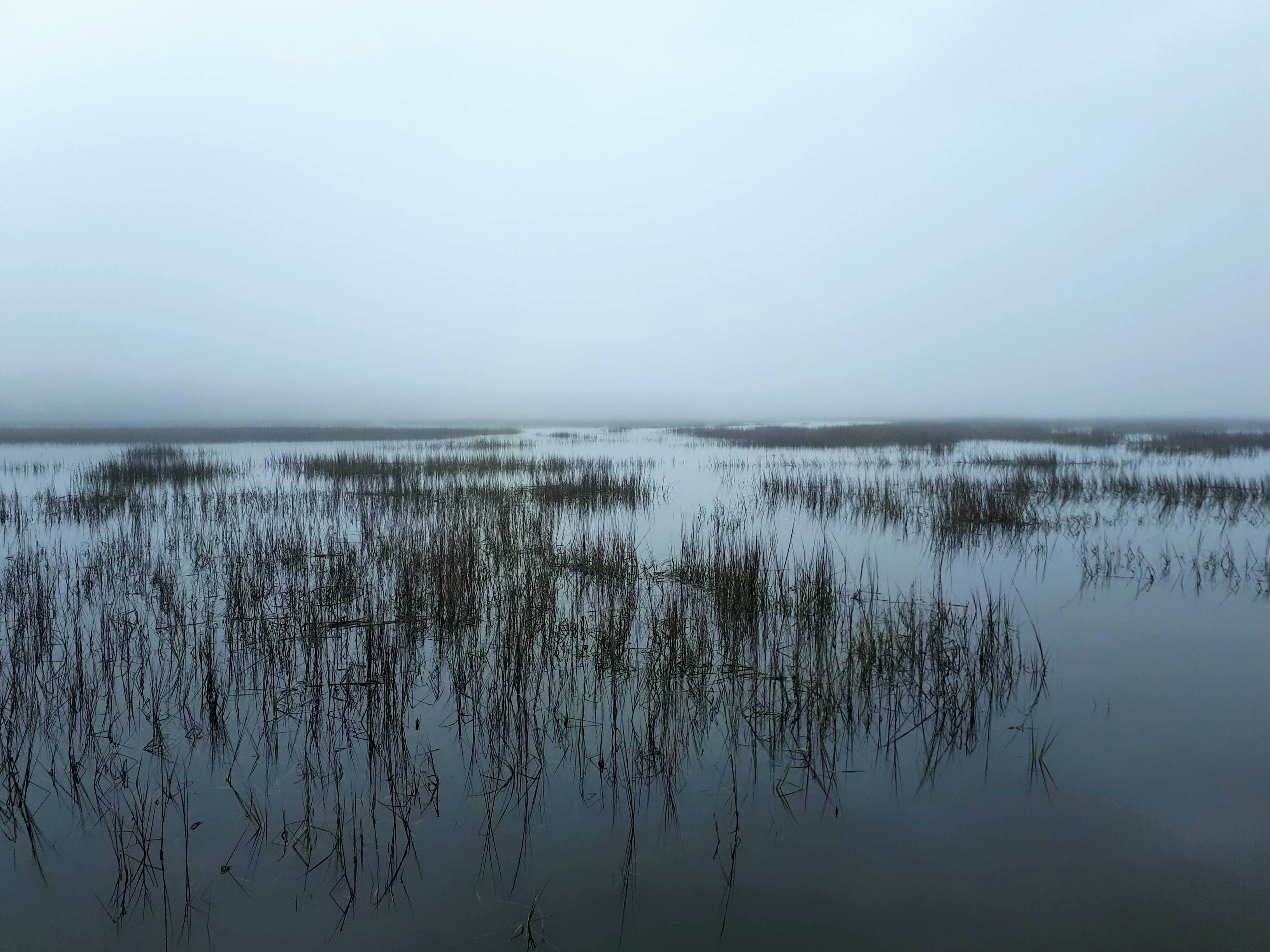
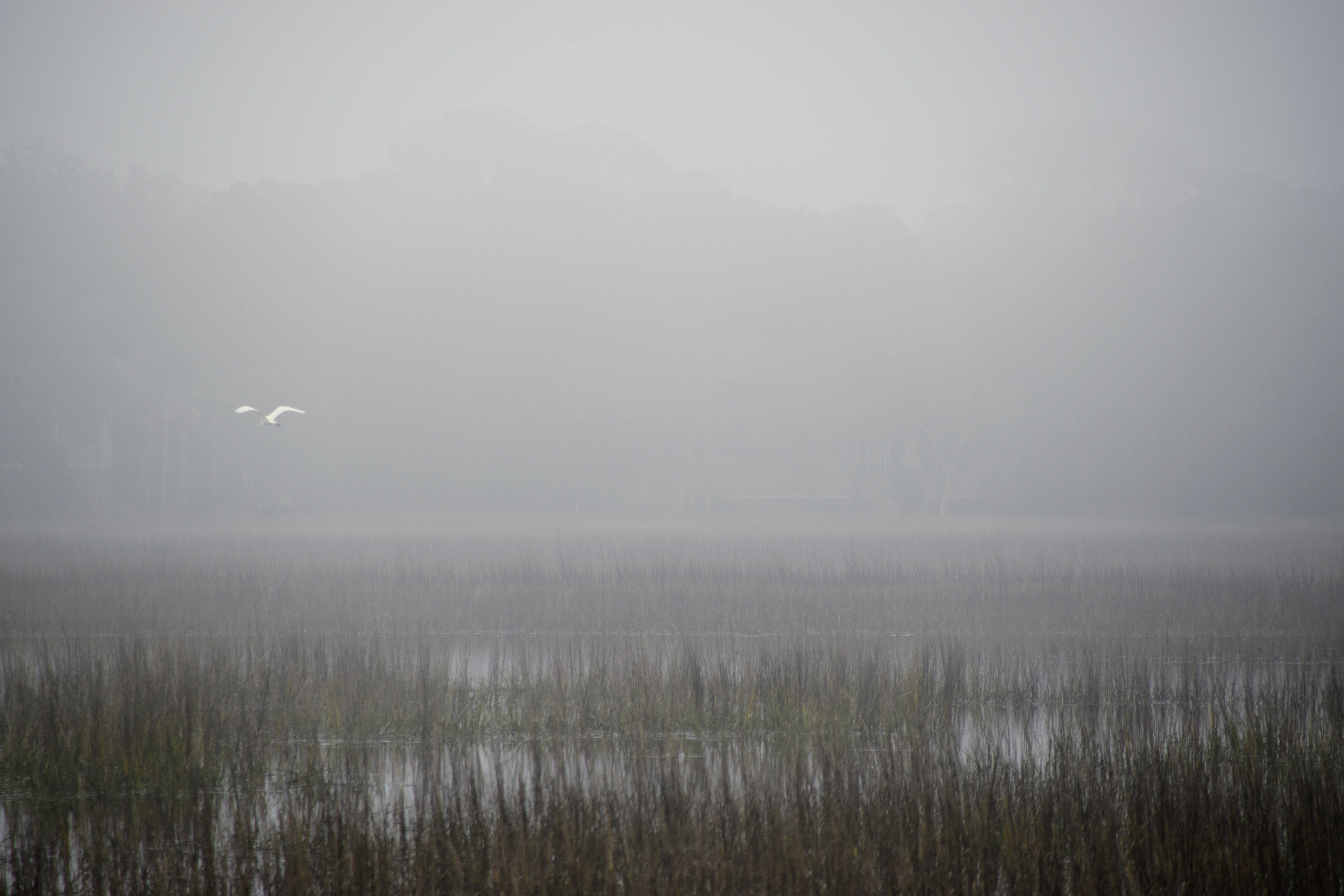
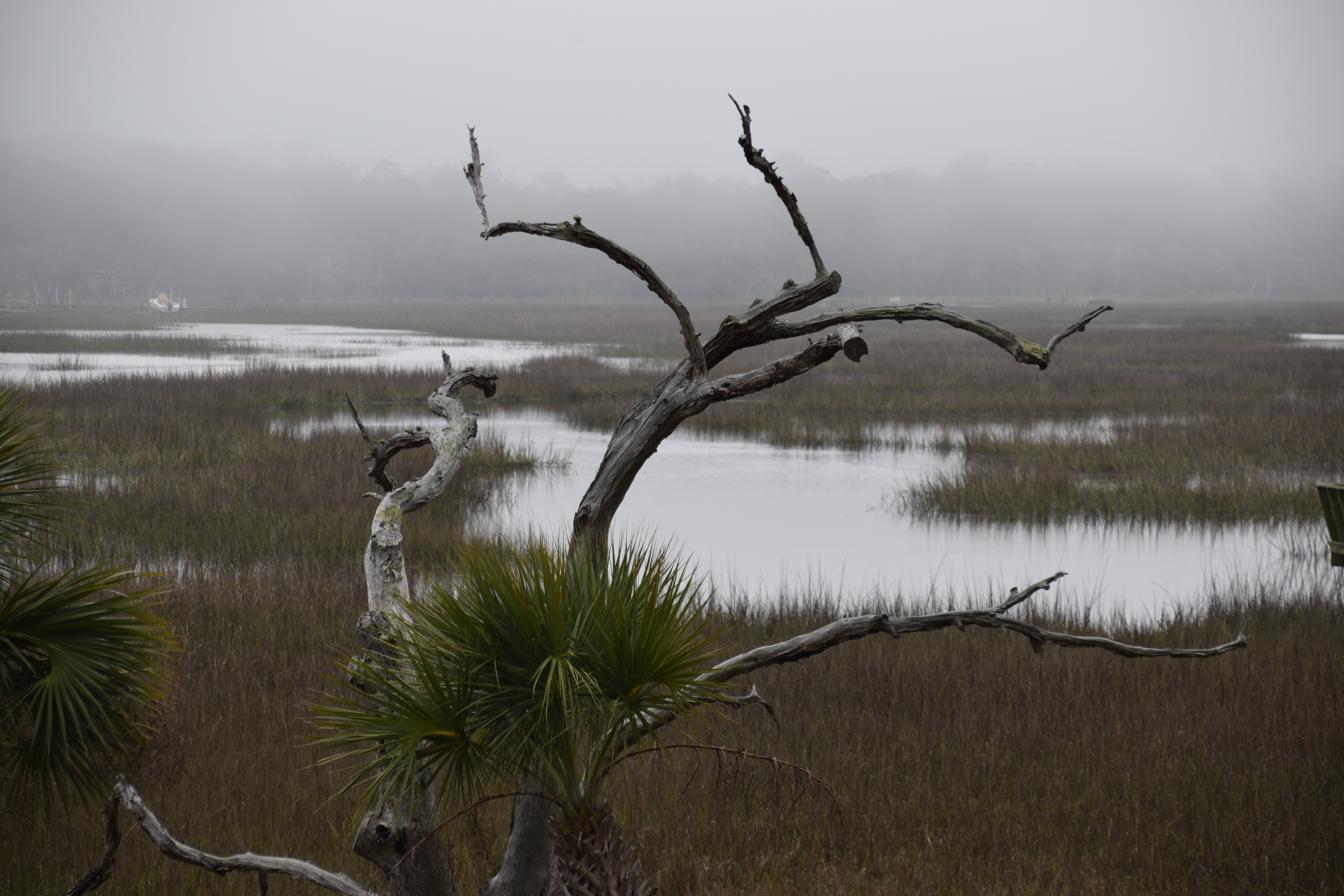
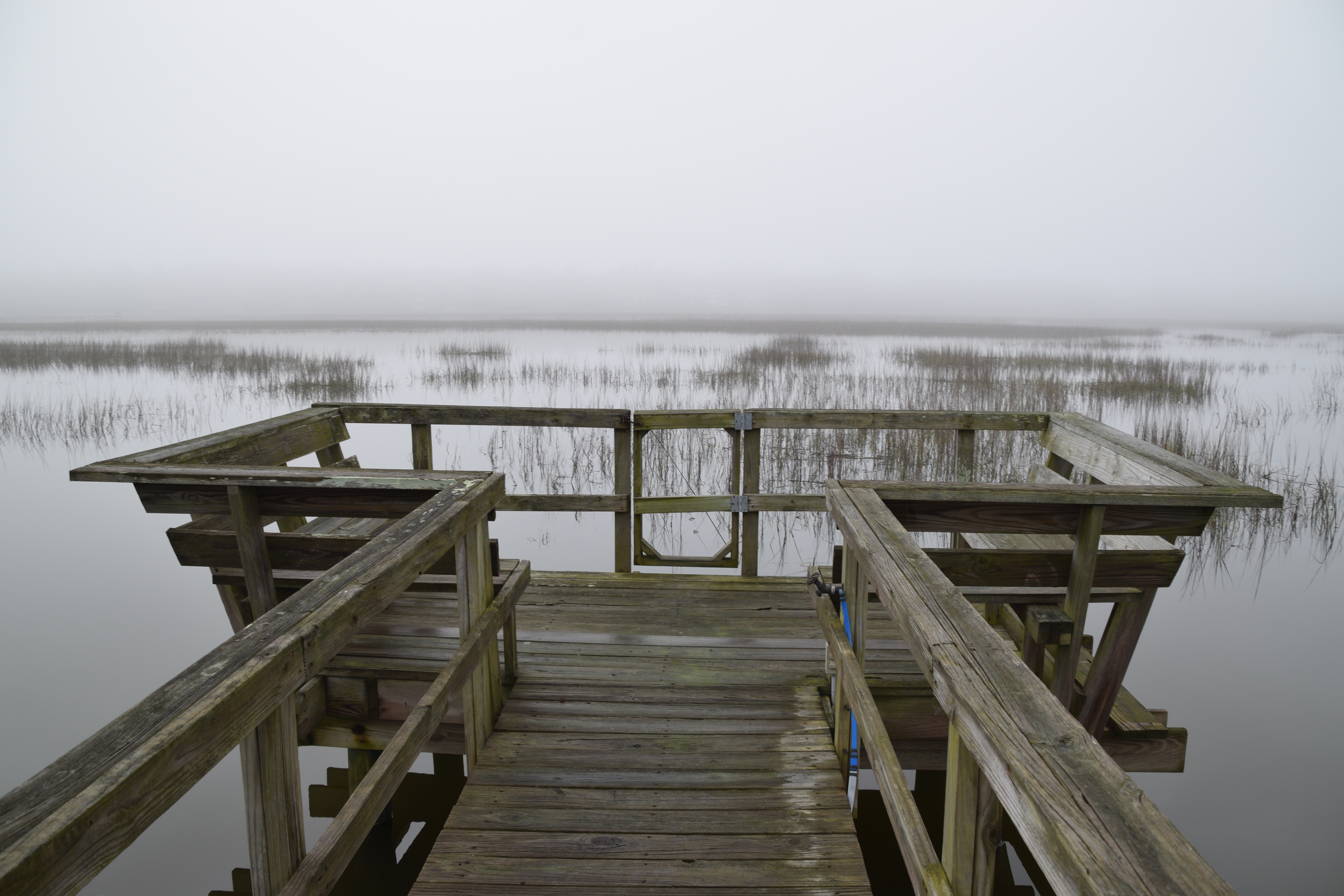
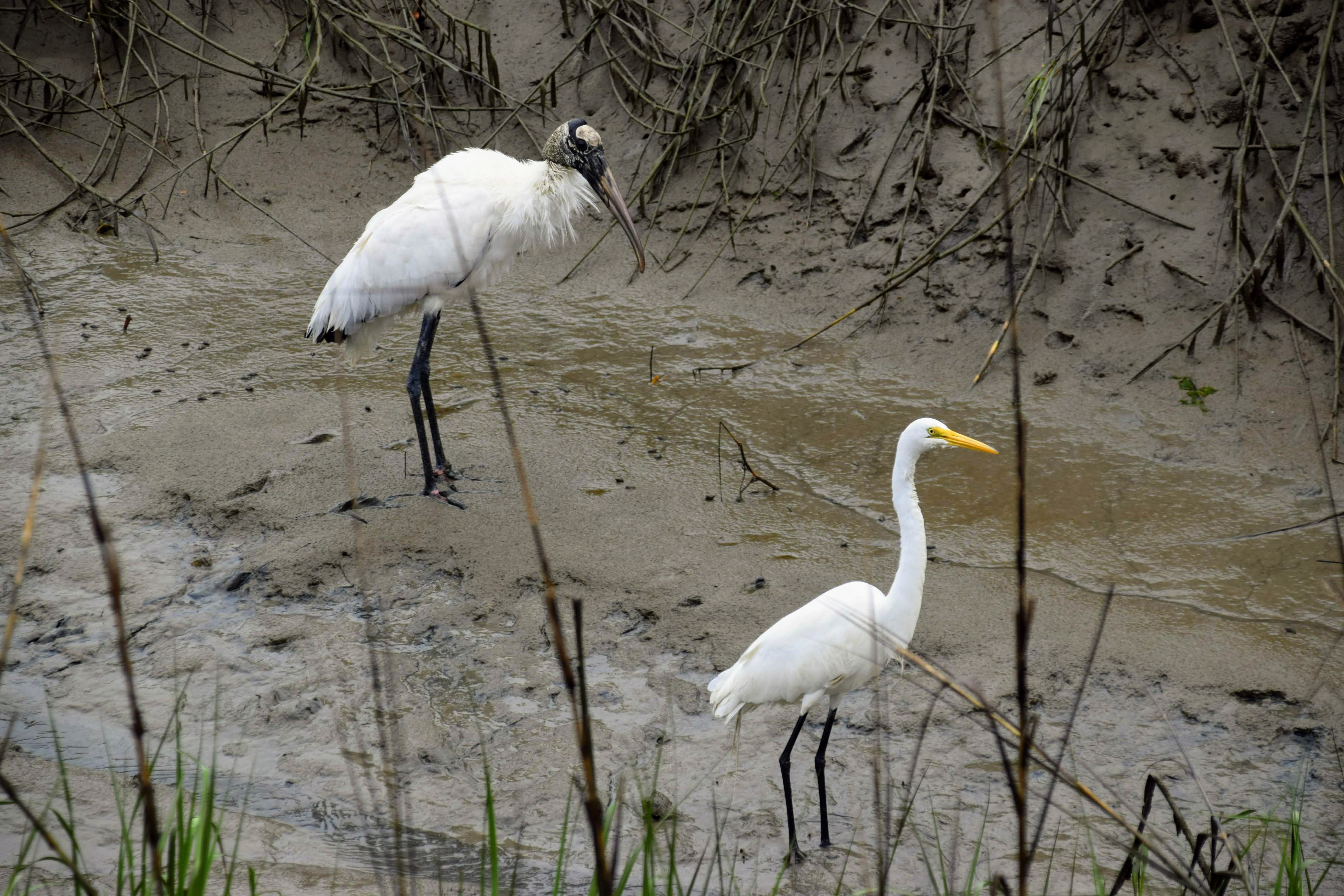

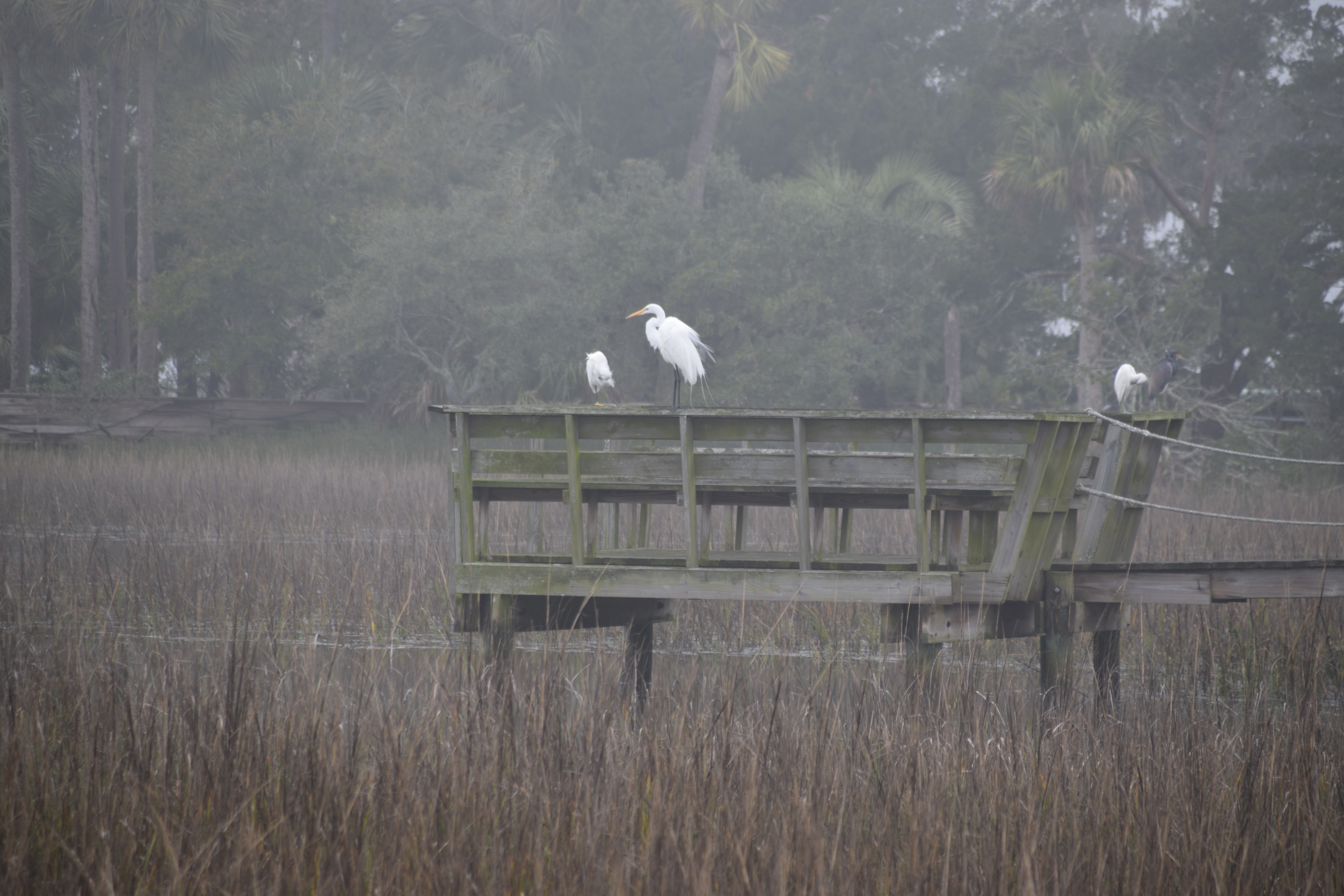
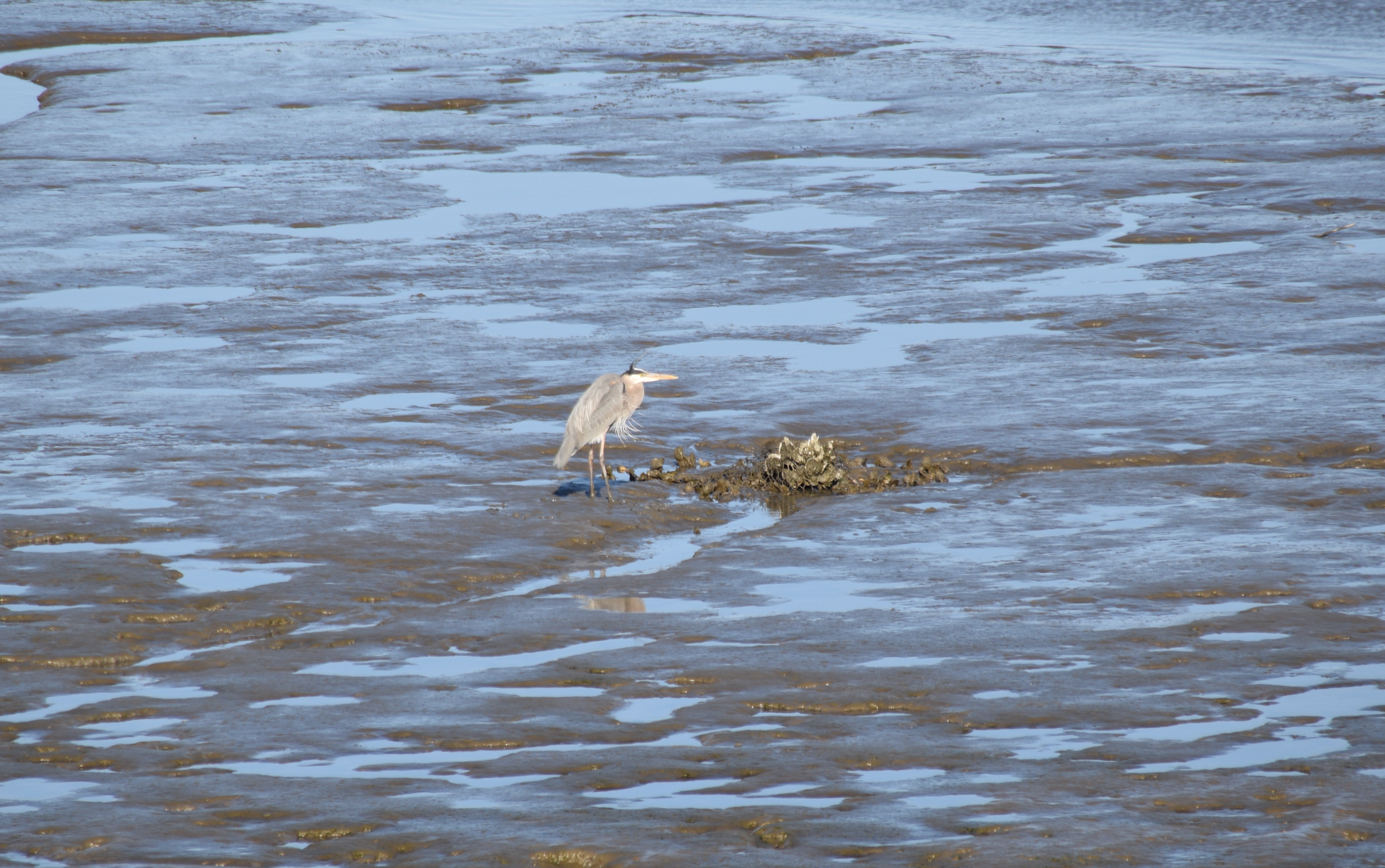

Not everything that moves is two – legged!
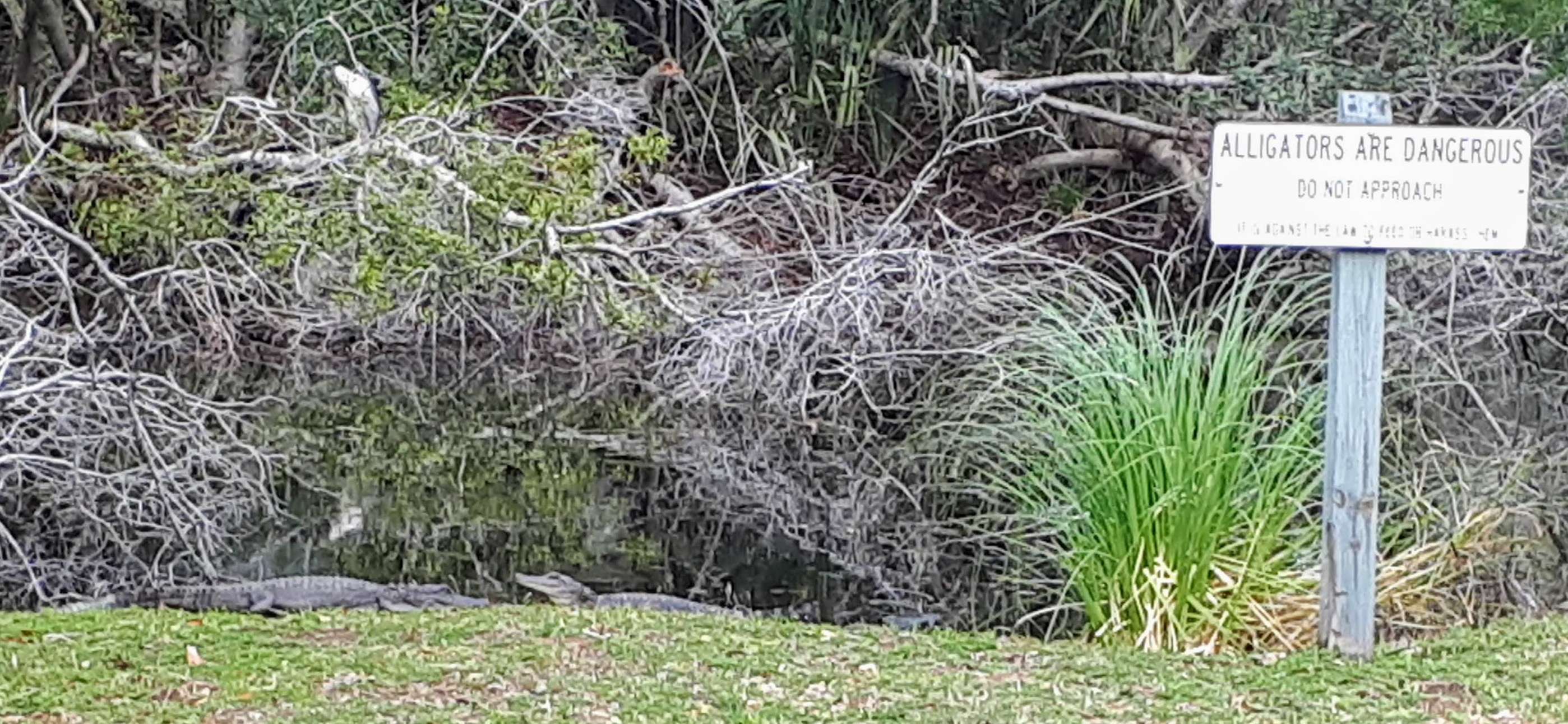
Spanish moss hangs everywhere…
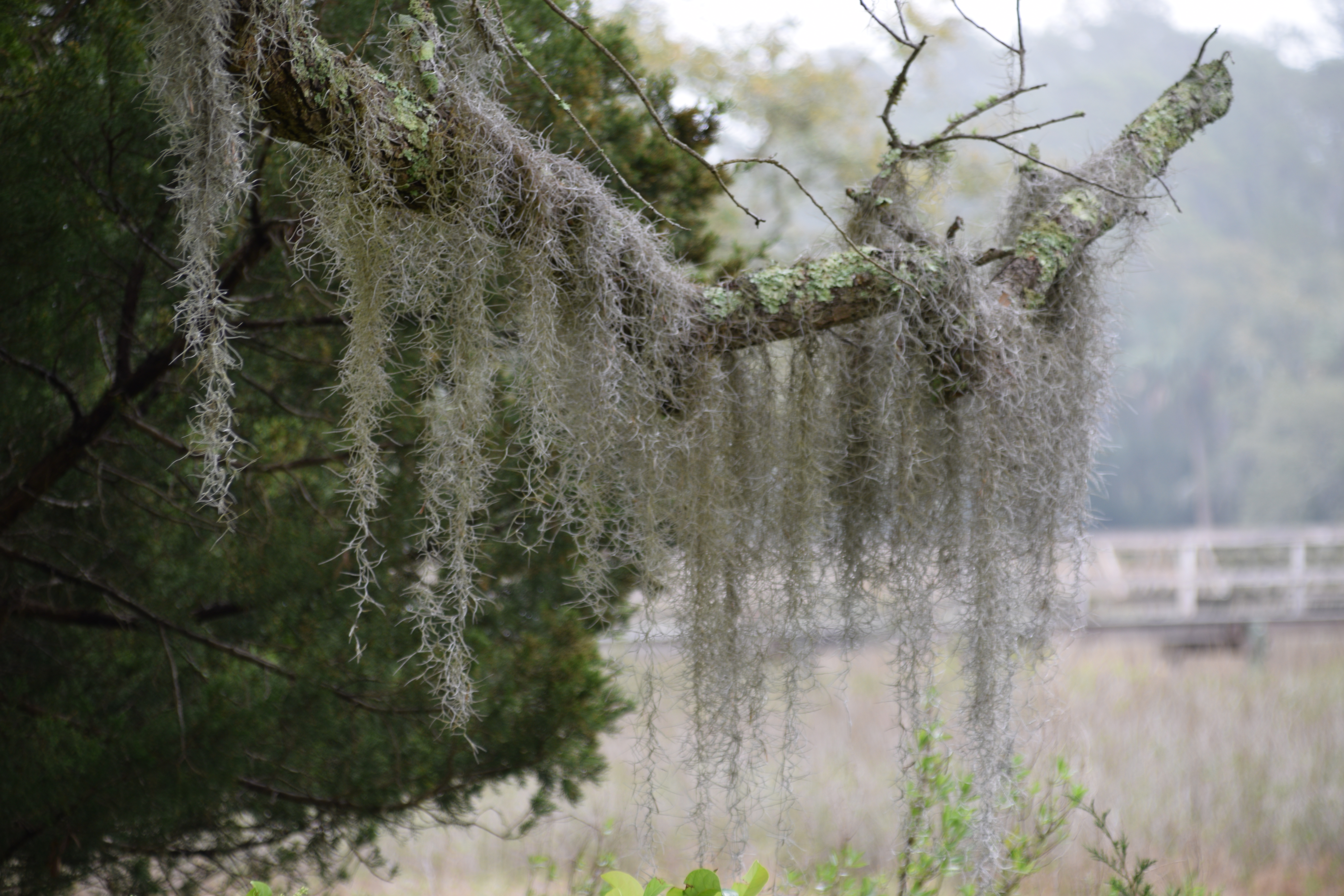

Angel Oak Tree
Angel Oak is a Southern Live Oak and is thought to be between 400-500 years old. It stands 20 metres tall, measures 8.5 metres in circumference and shades an area of 17,000 square feet under its crown. These oaks tend to grow more outwards than up but, due to its age, Angel Oak has done both. The largest branch reaches 187 feet, and several branches have gone underground only to surface again and keep going.
The tree has withstood hurricanes, earthquakes and floods. The forest around the tree provides shelter for its root system and helps protect the trees ecosystem and nowadays 17 acres around the tree are protected from development by the City of Charleston.
It gets its name from the estate of Justus and Martha Angel on which it stood. However, locals claim that the ghosts of slaves appear as angels around the tree.
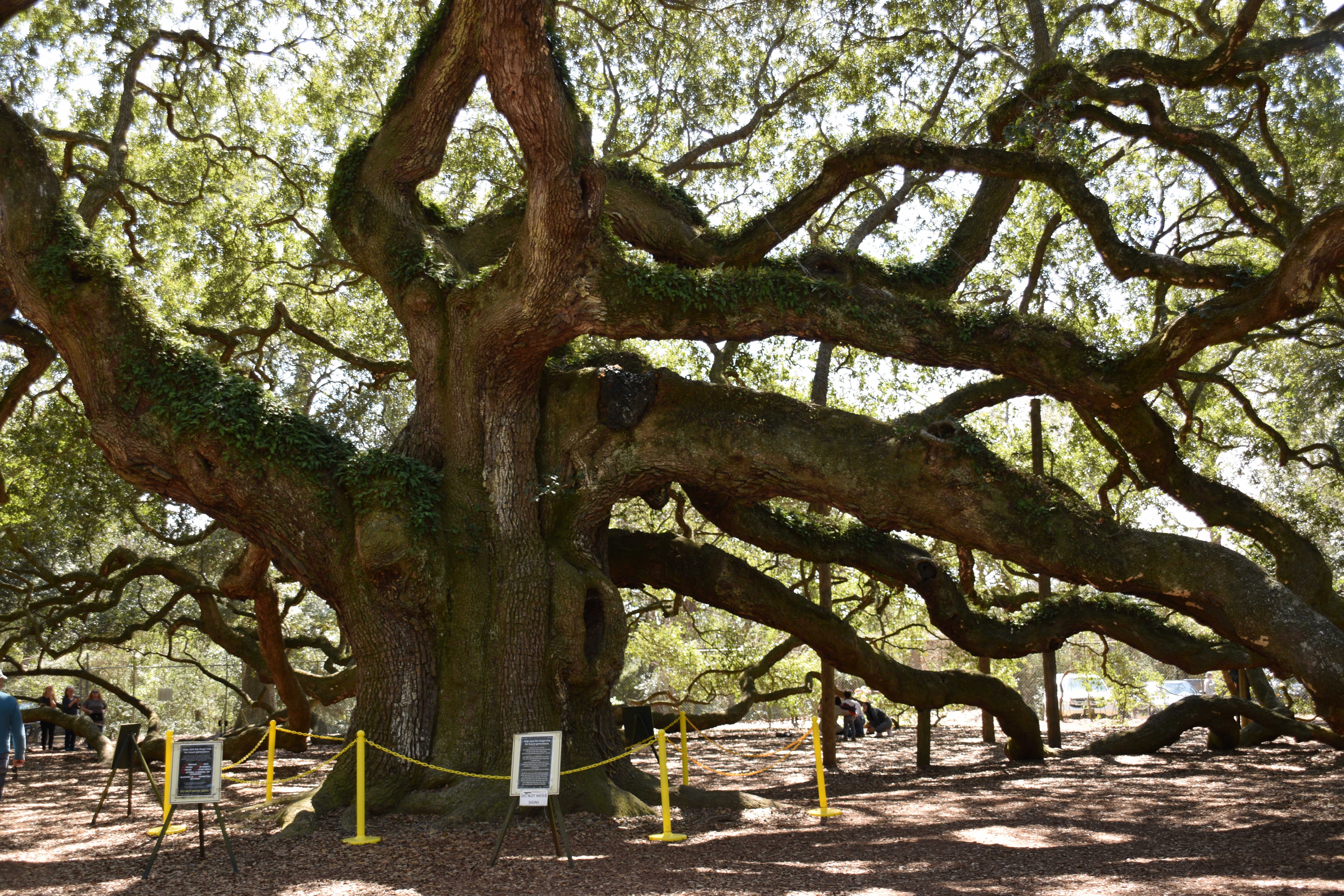
Those branches go on….
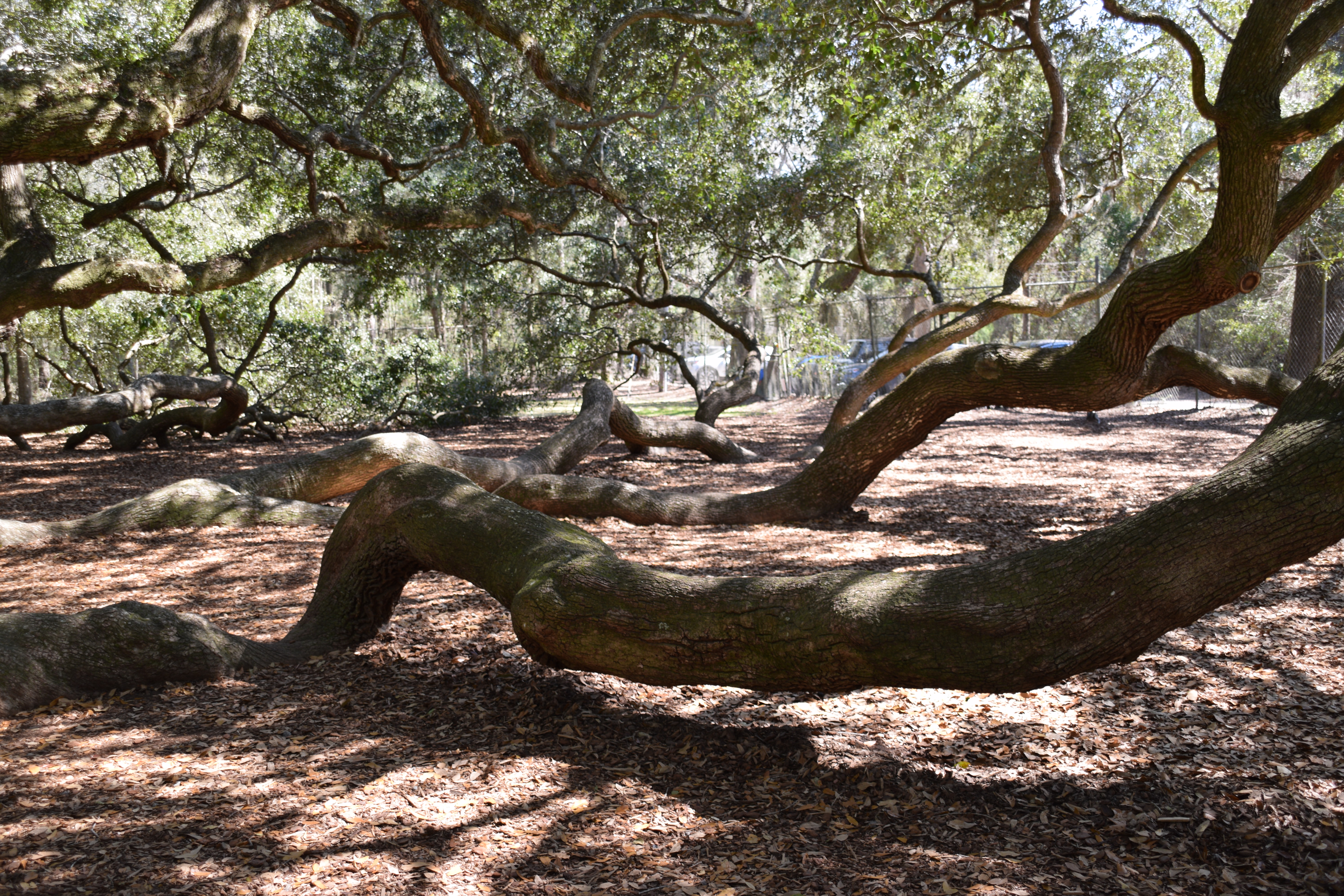
….and on…..
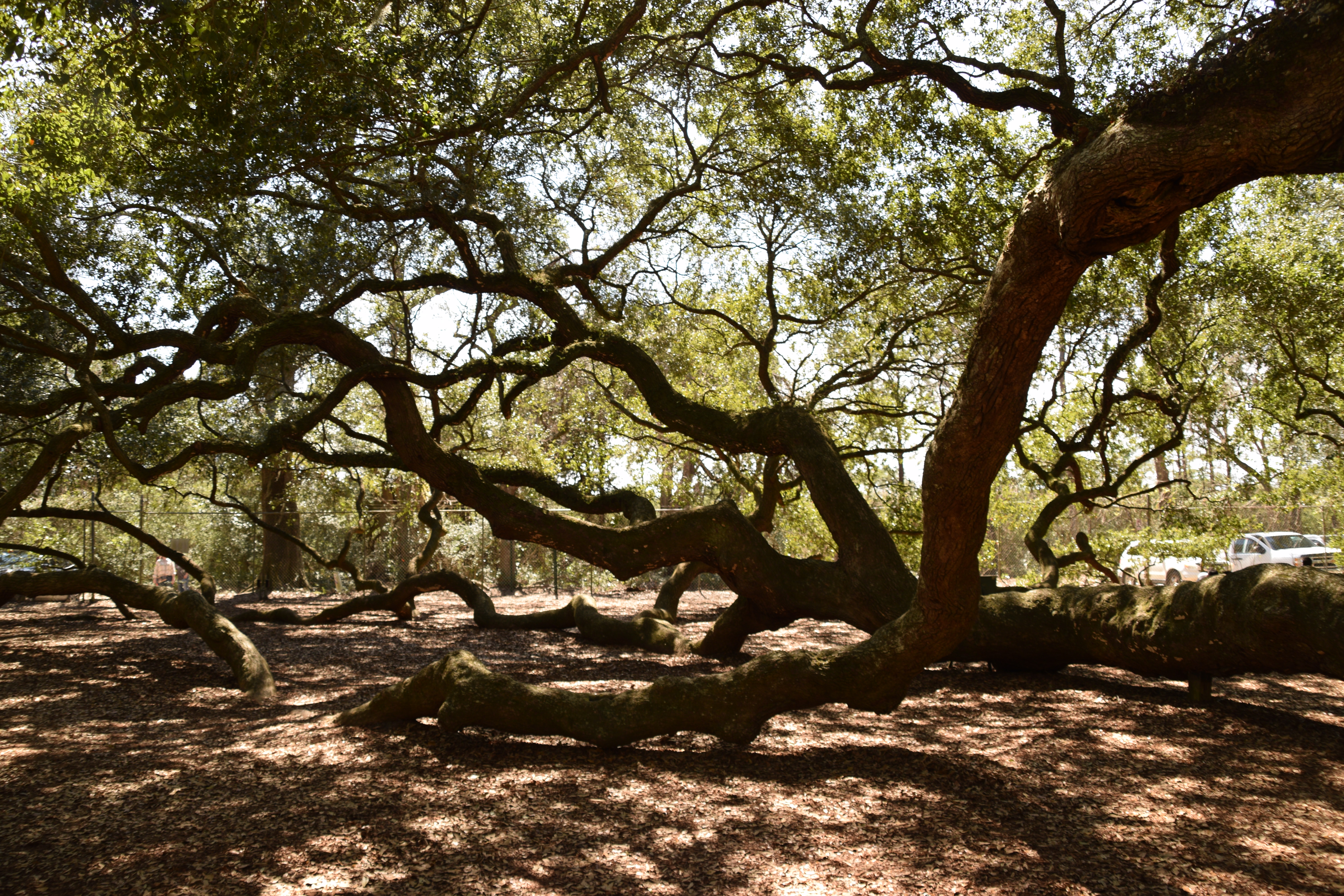
….and on!


Middleton Place Plantation
You have a choice of plantations in the area. They all have something different to offer – some are renowned for their house, or their history, or their wildlife. Middleton Place is best known for its gardens (the oldest landscaped gardens in the US). This 18th century plantation was located along the Ashley River, making it ideal for growing rice – especially Carolina Gold Rice – which made many Lowcountry planters very wealthy. The main house is actually attributed to a John Williams and the property was given as a dowry when his daughter married Henry Middleton in 1741. Middleton owned an incredible 20 plantations and an estimated 800 slaves.
The gardens were modeled after Versailles so include symmetry, focal points, outdoor rooms, reflecting pools, etc.
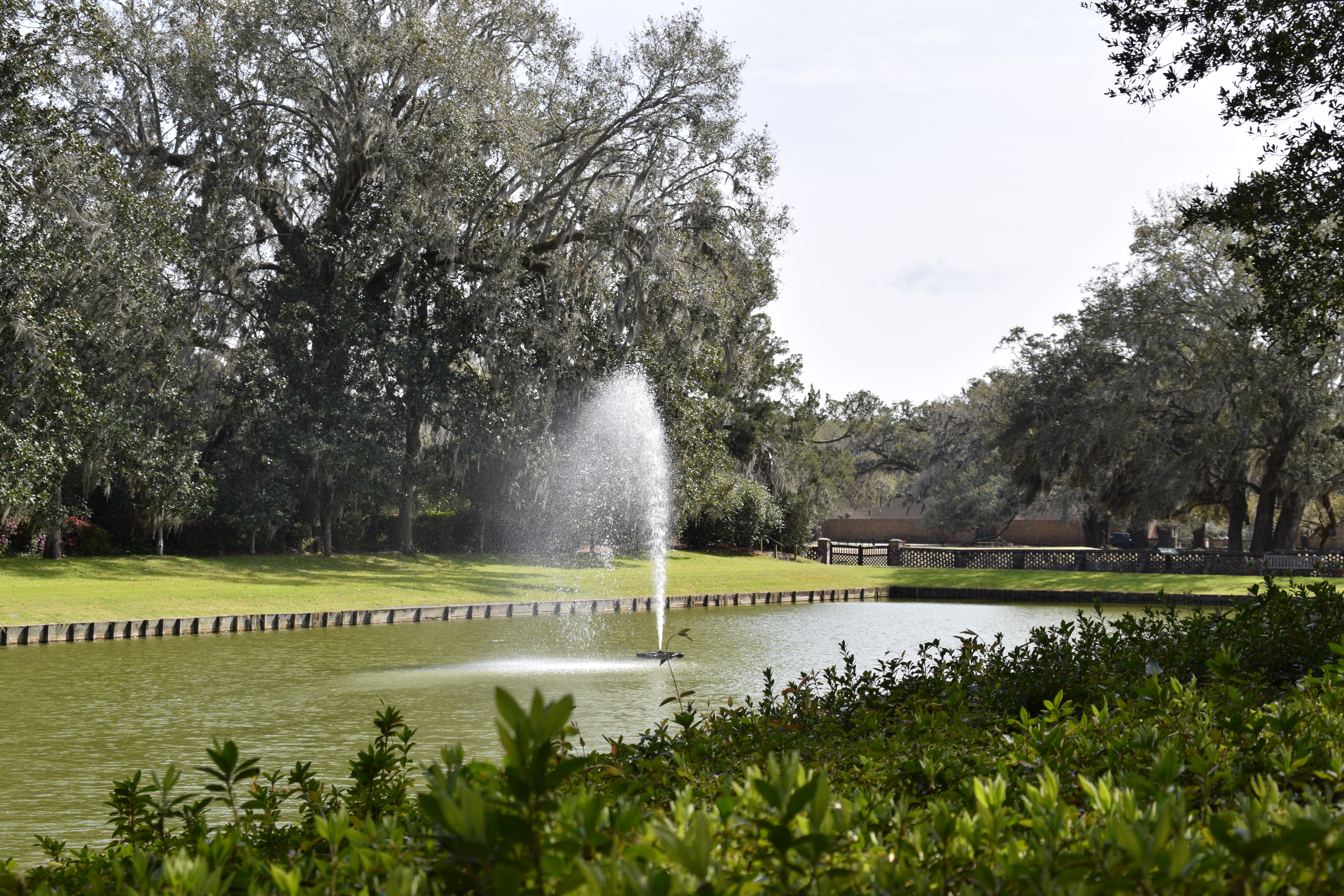

The Camellia allées are famous – (alleys bordered by trees and shrubs). Here they meet in arches overhead and have grown into tunnels

Secret gardens often contain classical sculpture…
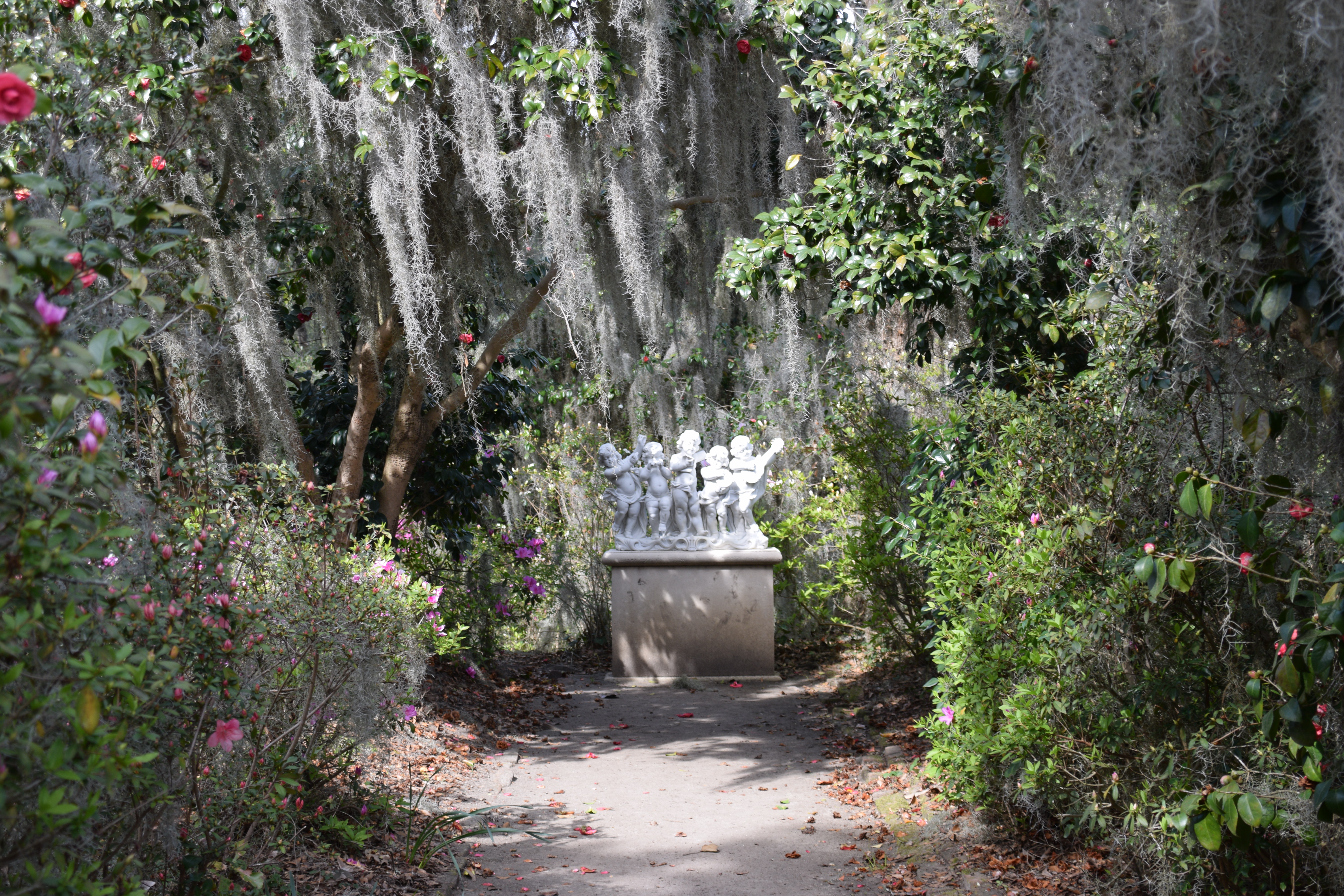
Many oak trees were removed during construction but this tree – the Middleton Oak -might have been spared because of its impressive size. It looks out over the rice fields.

The sundial garden is wheel shaped with triangular beds of perennial flowers and plants.
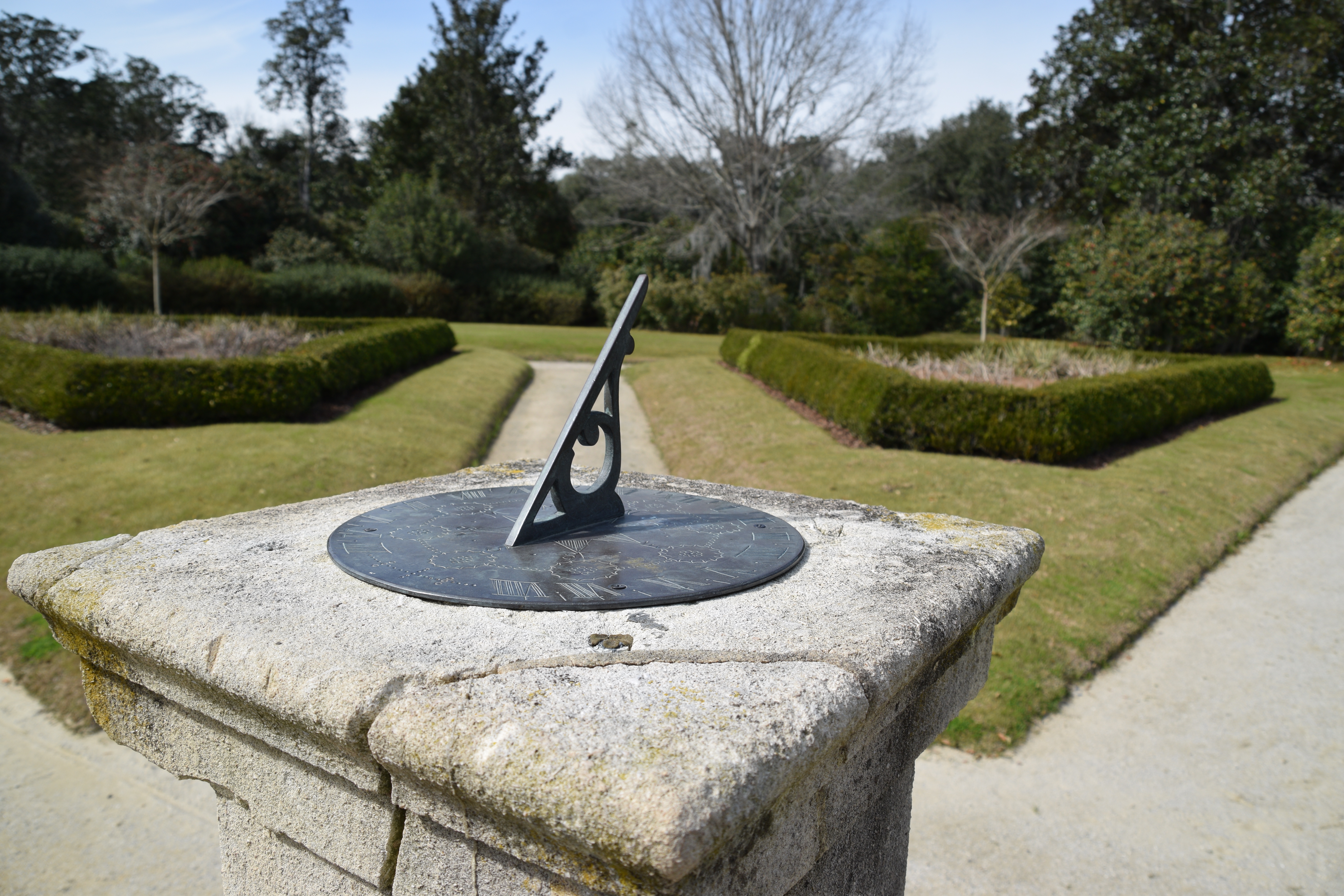


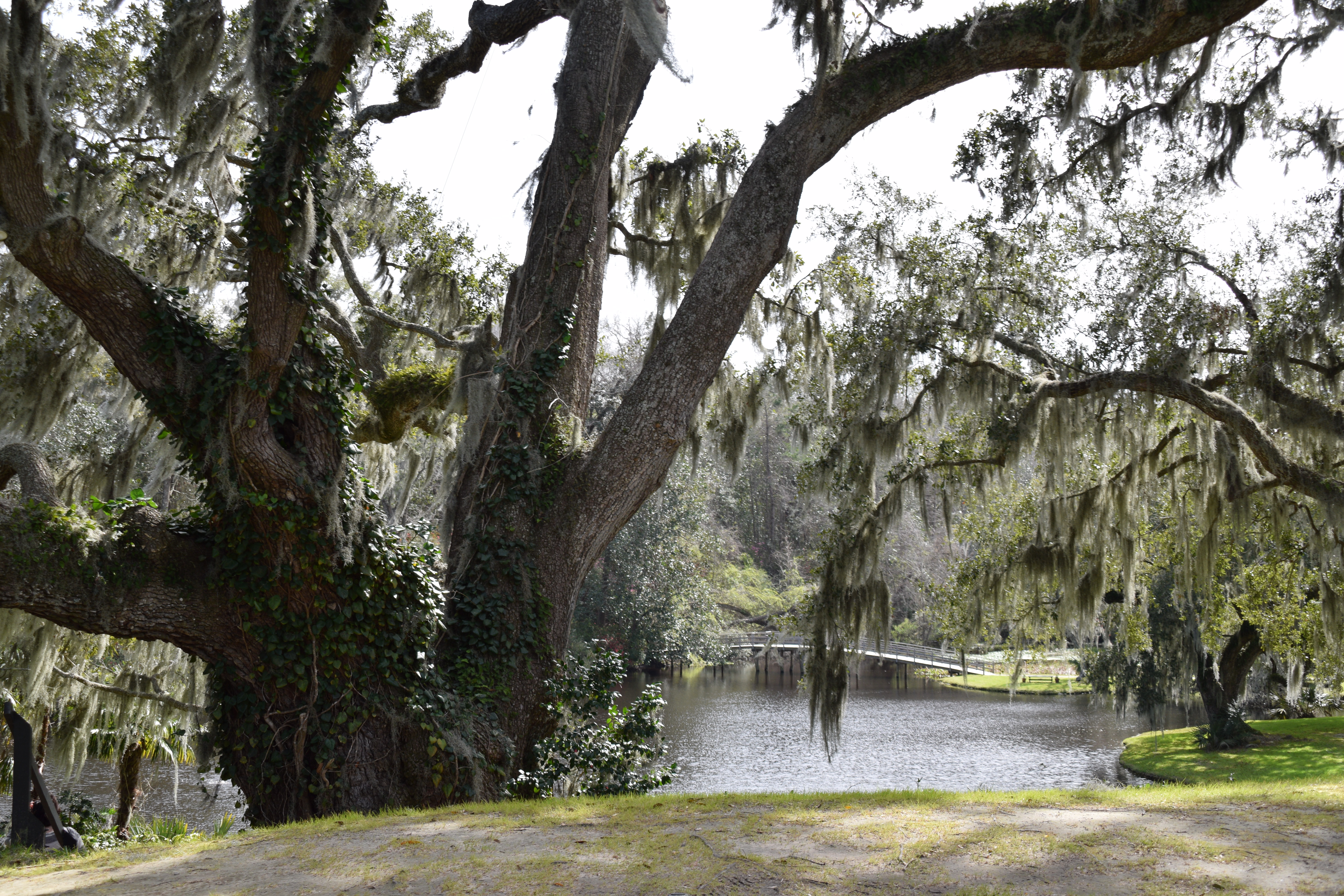
Mill Pond Bridge
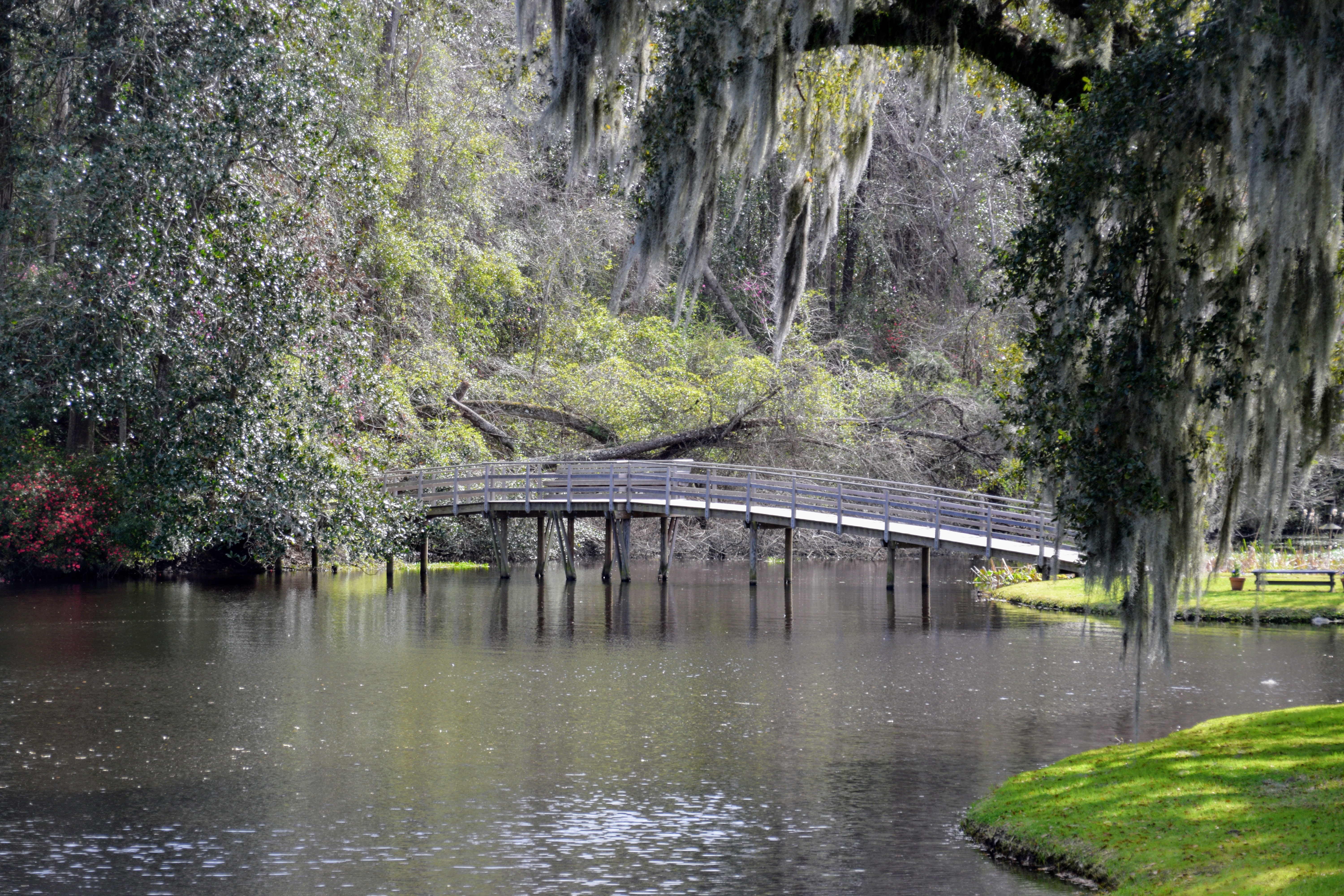
In springtime, the Mill Pond reflects a burst of colour from 1000’s of azaleas that were planted on the hillside above.
The Spring House was fed by spring waters and provided cool storage for food. The upper floor was used as a chapel for the enslaved residents.

This is all that remains of the 3 building residence that was home to the Middleton family. The main residence was flanked by this house and a similar one on the other side (see sketch below). The main house and north flanker were burned by Union troops in 1865 and whatever was left was flattened by the Great Earthquake of 1886. The family extended the less severely damaged south structure and moved in after the Civil War. Today, it serves as a museum and houses a collection of art, furniture, clothing , etc… (no photos permitted)

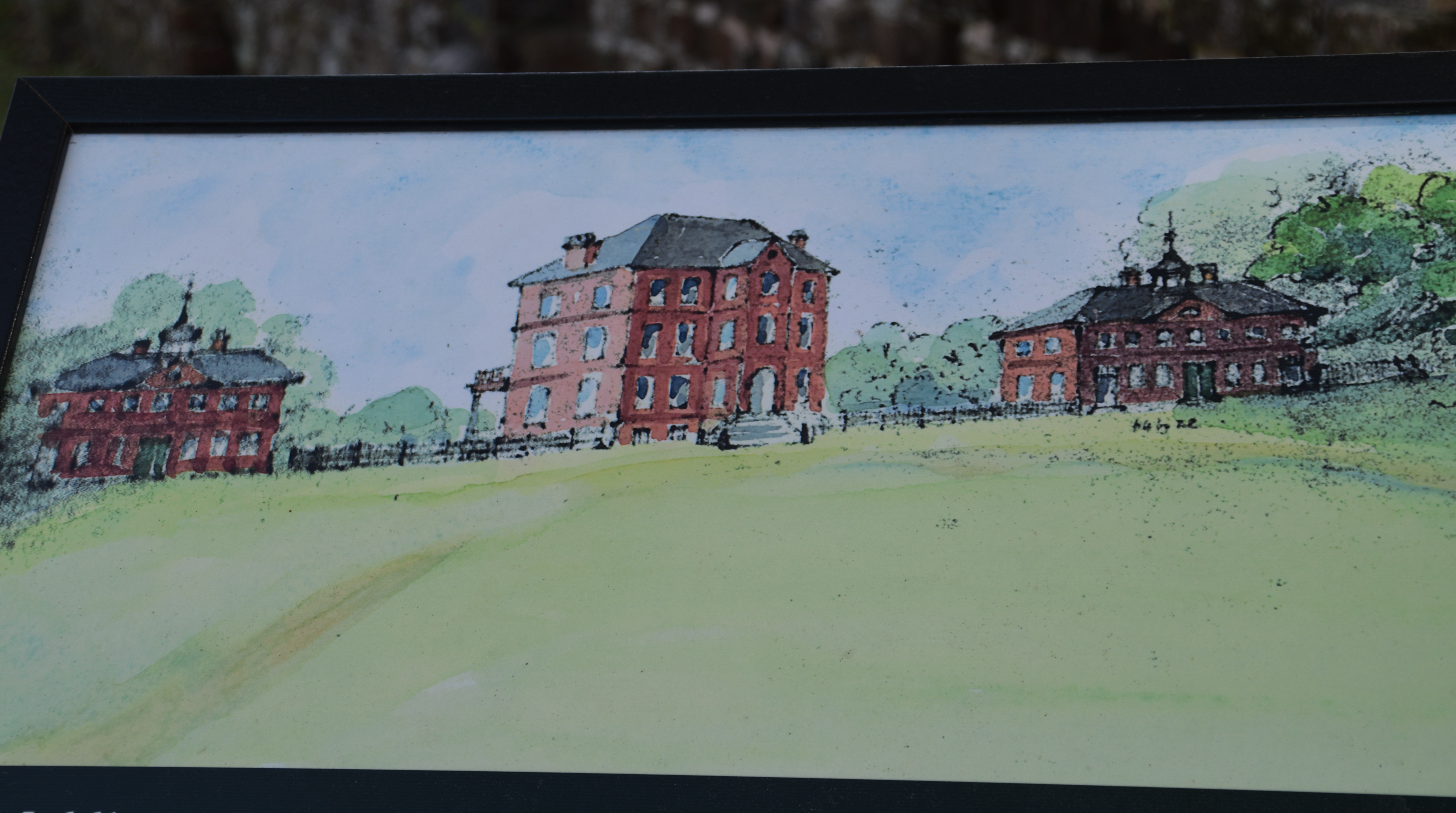
The steps of the main house along with its ruins can still be seen…
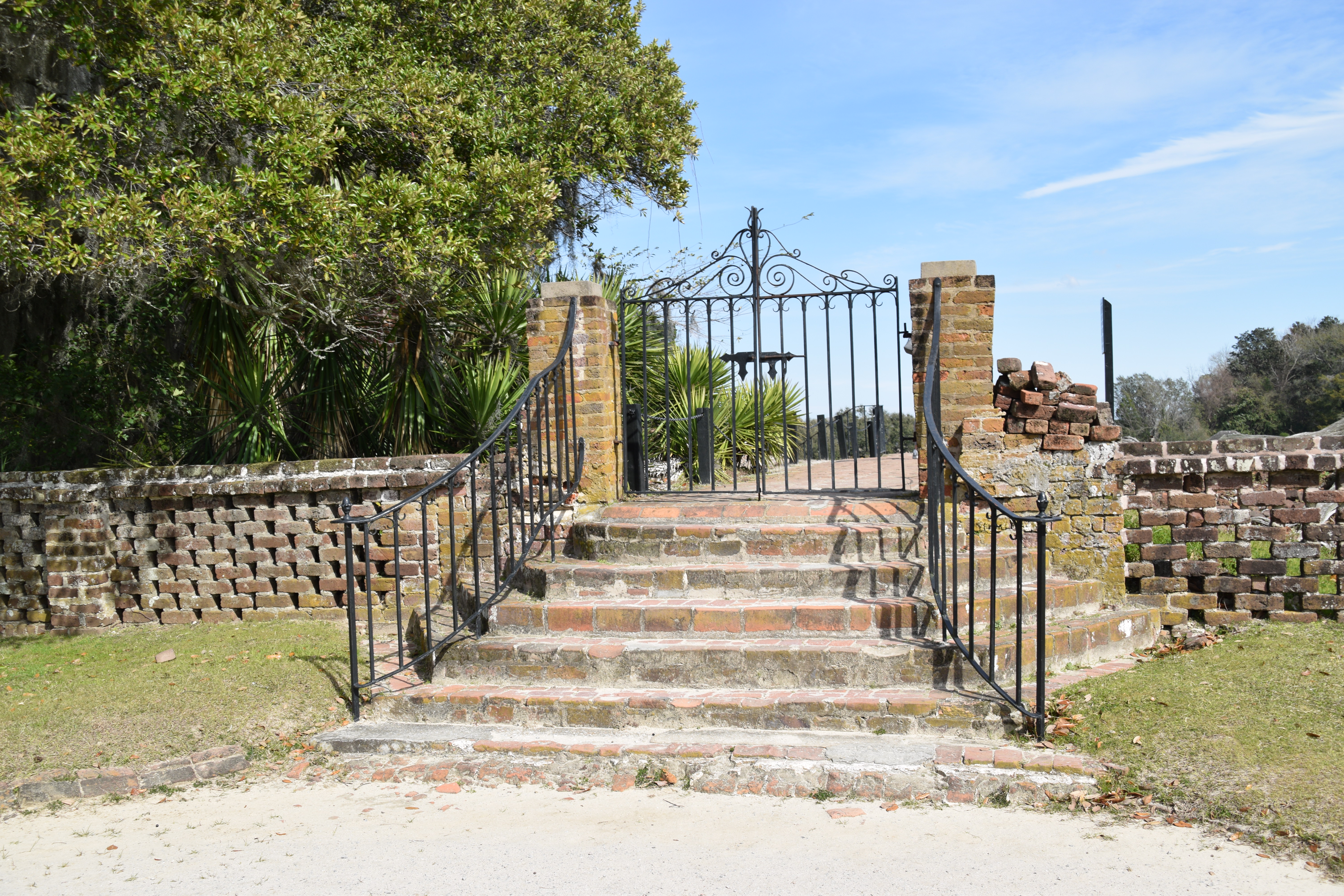
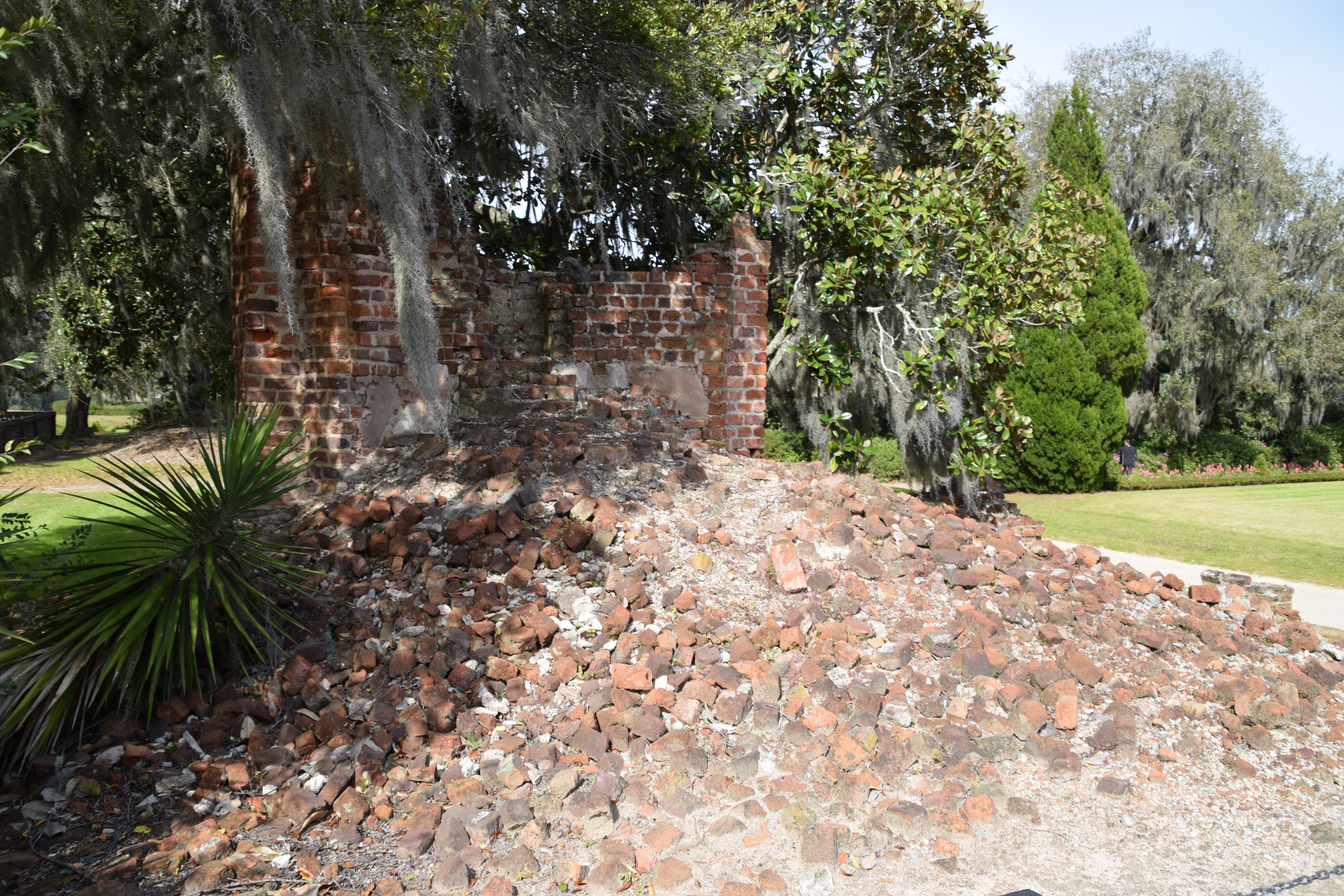
In the Stableyards, workshops highlight the jobs of the enslaved craftsmen – clothing, wool spinning, candle making, carpentry, coopering, pottery, blacksmith…..
In the Animal Paddocks you will see some of the animals that were important for life on the plantation. Cashmere goats were kept for their hair which was sent to France to be processed into cloth. Gulf Coast Sheep were a hardy breed that could withstand the challenging environment. Water Buffalo were brought in to work the rice fields.
♦♦♦♦♦♦♦♦♦♦
Small Stuff
Angel Oak Tree:
Located about 12 miles from Charleston, the area is not very accessible by public transport. The best options are rented car or bus tour.
Admission is free but donations are accepted.
Middleton Place:
Located about 16 miles from Charleston. Best accessed by car or tour.
Admission: Start saving! A hefty $29 to access the grounds and stableyards etc. Add another $15 for the guided house tour.
♦♦♦♦♦♦♦♦♦





















Wow thanks for sharing. I will have to plan a trip there in the future.
You’d find plenty in the region to share in your blog Tanya … great flora and fauna….
Beautiful nature pictures, and thanks for the memory notch! long many years ago went as close as route 17 going to college in Florida lol!
Bet you didn’t appreciate it much at the time!!!
Very atmospheric pictures – you should be proud of them. I’ve never visited Charleston or Georgia, but the Spanish moss draped trees and the Live Oaks reminded me very much of Louisiana. Lovely post.
Thanks Marie. Hope you get there some day.
XXXM
A beautiful place for sure. Thanks for sharing Marie. Hope all is well with you. Allan
Thanks Allen.. All ok here so far. I’ve been enjoying your snow photos – it was a different world when you took them…..
Too true. I can not believe how we squeaked that visit in, my wife managed a trip to L.A., just before the craziness started and we even managed to see the kids in Vancouver. Doing OK in crazy, longing for normal. Stay well Marie. Allan
Love your photos!
Thank you! It was a beautiful place in the early mornings.
Beautiful photos and beautiful trees, Marie! Exploring marshy lands sounds like a great way to see wildlife in their natural habitat. I’m glad you had a lovely time visiting South Carolina, I would love to see 400-year-old oak tree. Thanks for sharing and have a good day 😀 Aiva
Thanks Aiva – I’d love to go back sometime and do a birding trip there … must be amazing.
Mind yourselves. XXMarie
Fascinating article, excellent pics. Those wetlands are fabulous.
Aren’t they just!!! I’d love to go back and just concentrate on that. I’d no idea the area was so rich in birdlife.
Nice pictures. You have turned an otherwise plain-looking place looked so beautiful through your pictures. I wish I can have the same level of photography skills as you
Well thank you for your support and compliments. To be honest I’ve very limited skills- just got the camera 2 years ago and can only use it at the most basic level. Really need to do a photography course and learn how the thing works. Thanks for stopping by. Mind yourself these days… XXMarie
Wow! What amazing photographs! Those trees are amazing! And I love old buildings- so much history!
This was my first time in the area – it was never on my travel list but I was visiting a friend. Really loved it.